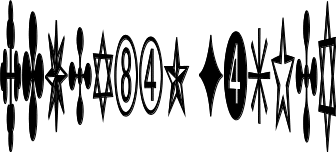HYPERTENSION FREQUENTLY ASKED QUESTIONS (FAQS) IF YOU HAVE ANY
1650 CAT 58 EITHER PNEUMONIA AND PULMONARY HYPERTENSION TM2006基因體高血壓研究及治療國際研討會 INTERNATIONAL SYMPOSIUM ON THE GENOMIC HYPERTENSION RESEARCH AND
3005 DUAL AT1 RECEPTORNEPRILYSIN INHIBITION (ARNI) IN HYPERTENSION AN
ACCELERATED HYPERTENSION GUIDELINES ORAL AGENTS AN EXCESSIVE HYPOTENSIVE RESPONSE
ALGORITHM FOR RESISTANT HYPERTENSION CASE ALGORITHM STEP 1 CASE
ASSOCATION DES PRATICIENS DE GÉNÉTIQUE MOLÉCULAIRE (ANPGM) HYPERTENSION ARTERIELLE
HYPERTENSION FREQUENTLY ASKED QUESTIONS (FAQs)
HYPERTENSION FREQUENTLY ASKED QUESTIONS (FAQs)
If you have any questions or need further clarification, please submit these via email to [email protected]. The FAQs will be updated as questions or issues arise.
8/19/10
Questions/Clarifications from SBHC Regional Hypertension Trainings
Are there certain labs that can be paid for by Medicaid without referral from the PCP?
SBHCs are exempt from needing a PCP referral to provide services to students ages 10 and older. Therefore, if a SBHC provides the laboratory or EKG services in-house, this exemption also applies.
When should staff use the dummy code NBP?
The dummy code NBP should only be used once the student has had an elevated blood pressure and then the blood pressure returns to normal. This dummy code should not be used if the blood pressure is normal on the first reading (annual screening) or is normal upon completion of the averaged blood pressure screening (first visit of the screening form).
When should a student be identified as pre-hypertensive or hypertensive (suspected or actual)?
A student has to have 3 or more elevated blood pressures to be identified as either pre-hypertensive or hypertensive (suspected or actual). Therefore, all screening visits must produce an elevated blood pressure in order to identify a student with pre-hypertension or hypertension. If on any one of the 3 screening visits the blood pressure is normal, the student would be identified as normal and rechecked in 1 year.
Why use the dummy code SHTN (suspected hypertension)?
Some providers in the pilot project were uncomfortable using the diagnosis for hypertension (401.9) because they did not want to label children with this diagnosis. Therefore we developed a dummy code for suspected hypertension in order to assure appropriate tracking and follow-up of students identified with blood pressure 95%. However, providers are free to use 401.9 if they choose. When using SHTN, providers should also use 796.2 for elevated blood pressure without the diagnosis of hypertension. SBHC providers should refer to the primary care doctor or appropriate specialist according to their clinical judgment.
If the systolic blood pressure reading is elevated, but the diastolic blood pressure is normal, is the pressure elevated?
Yes, if either the systolic or diastolic blood pressure is elevated, then the overall blood pressure is elevated.
How do you average the 3 blood pressure readings?
Here is an example:
125/78 128/80 126/81
125 + 128 + 126 = 379/3 = 126.3
78 + 80 + 81 = 239/3 = 79.6
So the average blood pressure is 126/80.
Should staff document health education?
Yes, staff should document health education provided to students in their patient charts. The pre- and post-tests are part of health education about hypertension and should be documented as part of the visits when these tests are given to students. Test answers should be reviewed jointly by student and staff as part of the educational component.
How should referrals for pre-hypertension be handled?
When students are identified as pre-hypertensive, the first step is to refer them to the SBHC NP or MD for evaluation (comprehensive physical exam). Based on the results of the evaluation, the SBHC provider would then decide whether to refer the student to other sources including their PCP. Typically, a student identified as pre-hypertensive (blood pressure between 90-94%) would only receive nutrition, exercise and lifestyle counseling and be followed by the SBHC every 6 months. Of course, the SBHC provider may chose to follow the student more closely at their discretion.
If we have students previously diagnosed with hypertension, do we need to screen them each year?
If a student was diagnosed with existing hypertension by the SBHC provider or an outside provider, there is no need to start the hypertension screening form again. The treatment should just be continued.
If we identify a student with elevated blood pressure during a comprehensive exam and then complete the screening form for them and they have pre-hypertension or hypertension, do we repeat the comprehensive exam?
If a comprehensive physical exam has been performed on a student within the past 6 months and the provider feels comfortable with the results of that physical exam, the comprehensive physical does not have to be repeated.
B CRF CARDIOVASCULAR COMPLICATIONS E 01 PRIMITIVE HYPERTENSION EFFECTS
CLINICAL GUIDELINE HYPERTENSION IN PREGNANCY HYPERTENSION COMPLICATES APPROXIMATELY 10
CLOSER LOOK AT WHITECOAT HYPERTENSION NURVER TURFANER SIPAHIOGLU FIKRET
Tags: (faqs) if, hypertension, questions, frequently, asked, (faqs)
- THIS TECHNICAL EXHIBIT (TE) CONTAINS INFORMATION THAT COULD NOT
- 2 KURUM İÇ DEĞERLENDİRME RAPORU HAZIRLAMA KILAVUZU KURUMSAL DIŞ
- CURSO VIRTUAL “VIVAMOS EL PATRIMONIO” INSCRIPCIONES 2010 EL
- B21 WRITTEN MEDIATION TASK WRITE AN EMAIL TO YOUR
- ENTE ACCREDITATO REGIONE PUGLIA DGR N 1503 DEL 28102005
- BU SCRAPPLE PENN KREME CHEEZE KUP 1997 TOSSUP 1
- MICROENTERPRISE APPENDIX BENEFIT IS THERE A SEPARATE FILE FOR
- DECLARACIÓN DE HISTORIAL PERSONAL PÁGINA 7 DECLARACION DE HISTORIAL
- CONVOCATORIAS CURSO 20142015 (PENDIENTE DE PUBLICACIÓN) LAS CONVOCATORIAS DEL
- STAFF RECRUITMENT POLICY POLICY NUMBER INSERT NUMBER VERSION
- MODELAGEM DE BANCOS DE DADOS UNIVERSIDADE ESTADUAL PAULISTA
- SOCIEDAD DE PROMOCION ECONOMICA DE GRAN CANARIA SA NIF
- O MENTIREIRO VERDADEIRO PRIMEIRO DÍA QUE É O QUE
- DEMANDE D’AUTORISATION D’ABSENCE DE REGULARISATION D’ABSENCE NOM
- INVIERNO 2008 PROGRAMA DE YUCATÁN PROYECTO FINAL LAS ABEJAS
- WHAT IS THE GENERAL LEDGER? THE GENERAL LEDGER CONTAINS
- EVROPSKI CENTER ZA RAZVOJ POKLICNEGA USPOSABLJANJA OBJAVA PROSTEGA DELOVNEGA
- ENERGETSKO SVETOVANJE ENSVET OBJAVA STROKOVNEGA ČLANKA 1 5
- DEPARTAMENTO DEPARTAMENTO DEBIDO A LA SITUACIÓN ACTUAL Y PARA
- LOS VECINOS DE VISTALEGRE ALARMADOS POR EL MAL ESTADO
- END OF MONTH STATS REPORT – DECEMBER 2015
- MINISTRY OF HEALTH AND LONGTERM CARE SMALL DRINKING WATER
- SECTION 28 31 91A FIRE ALARM SYSTEM DESCRIPTION PAGE
- MODEL D’AVAL BANCARI DE CONTRACTES DE L’ADMINISTRACIÓ PÚBLICA
- I ESPACIO RESERVADO PARA EL SELLO DE REGISTRO DE
- OLIMPIADA DE ISTORIE ETAPA PE ṢCOALӐ CLASA A IXA
- EVROPSKA UNIJA OBJAVA DOPOLNILA K URADNEMU LISTU EVROPSKE UNIJE
- PROJECT INFORMATION DOCUMENT (PID) CONCEPT STAGE REPORT NO AB1065
- EXECUTIVE SUMMARY THE MOST IMPORTANT FINDINGS OF THE ZERO
- KLAUZULA INFORMACYJNA DOTYCZĄCA PRZETWARZANIA DANYCH OSOBOWYCH W PRZYPADKU POZYSKANIA
TECHNICAL DIRECTION THEATRE 333 SECTION 01 & 02 JOHNNIE
 AGREEMENT ON THE CONSERVATION OF AFRICANEURASIAN MIGRATORY WATERBIRDS DOC
AGREEMENT ON THE CONSERVATION OF AFRICANEURASIAN MIGRATORY WATERBIRDS DOC TWELVE ANGRY MEN THE CHARACTERS THE JURORS EXAMPLE OF
TWELVE ANGRY MEN THE CHARACTERS THE JURORS EXAMPLE OFORDEN2016 DE DE DE LA CONSEJERÍA DE POLÍTICAS
ZAŁĄCZNIK NR 5 SYLABUS PRZEDMIOTU MODUŁU KSZTAŁCENIA NAZWA
BOTANICAL PESTICIDES NEEM CAKE INGREDIENTS NEEM CAKE …………… 20
TEHNISKĀ SPECIFIKĀCIJA CENU APTAUJAI „AUTORIEPU ATJAUNOŠANA” IDENTIFIKĀCIJAS NUMURS ASDS201948
NEGOTIATING AUTHORITY THE LOGOGENESIS OF DIALOGUE IN COMMON LAW
5 NA OSNOVU ČLANA 67 ZAKONA O JAVNOJ SVOJINI
MUSTER ZWISCHEN (ARBEITGEBER ADRESSE) UND (ARBEITNEHMER ADRESSE)
 JUBILACIÓN PARCIAL Y ANTICIPADA Y ESTATUTO BASICO DEL EMPLEADO
JUBILACIÓN PARCIAL Y ANTICIPADA Y ESTATUTO BASICO DEL EMPLEADO ÁREA DE GOBIERNO DE CULTURA BIENESTAR SOCIAL Y SERVICIOS
ÁREA DE GOBIERNO DE CULTURA BIENESTAR SOCIAL Y SERVICIOSCOURT COPY MAGISTRATES COURT OF WESTERN AUSTRALIA APPLICATION
SPRAWDZANIE STANU ZDROWIA I PREDYSPOZYCJI PSYCHICZNYCH DO KIEROWANIA POJAZDAMI
 ESCOLA ESTADUAL DE EDUCAÇÃO PROFISSIONAL– MARVIN DISCIPLINA EDUCAÇÃO FÍSICA
ESCOLA ESTADUAL DE EDUCAÇÃO PROFISSIONAL– MARVIN DISCIPLINA EDUCAÇÃO FÍSICA GYVENAMŲJŲ PATALPŲ HIGIENINĖ PRIEŽIŪRA PATALPŲ HIGIENINIS ĮVERTINIMAS SUSIDEDA IŠ
GYVENAMŲJŲ PATALPŲ HIGIENINĖ PRIEŽIŪRA PATALPŲ HIGIENINIS ĮVERTINIMAS SUSIDEDA IŠ 27 POPULATION DENSITY AND TERRITORY SIZE IN JUVENILE RAINBOW
27 POPULATION DENSITY AND TERRITORY SIZE IN JUVENILE RAINBOWINTRODUKTIONSUDDANNELSEN DOKUMENTATION FOR OPNÅELSE AF KOMPETENCERNE VED ULTRALYDSVEJLEDT ANLÆGGELSE
ANALIZA PROBLEMA U ZAŠTITI NAJBOLJEG INTERESA DETETA U IZVRŠENJU
REPLICA A INTERACCIÓN Y CONSTRUCCIÓN DEL CONOCIMIENTO SOBRE LA